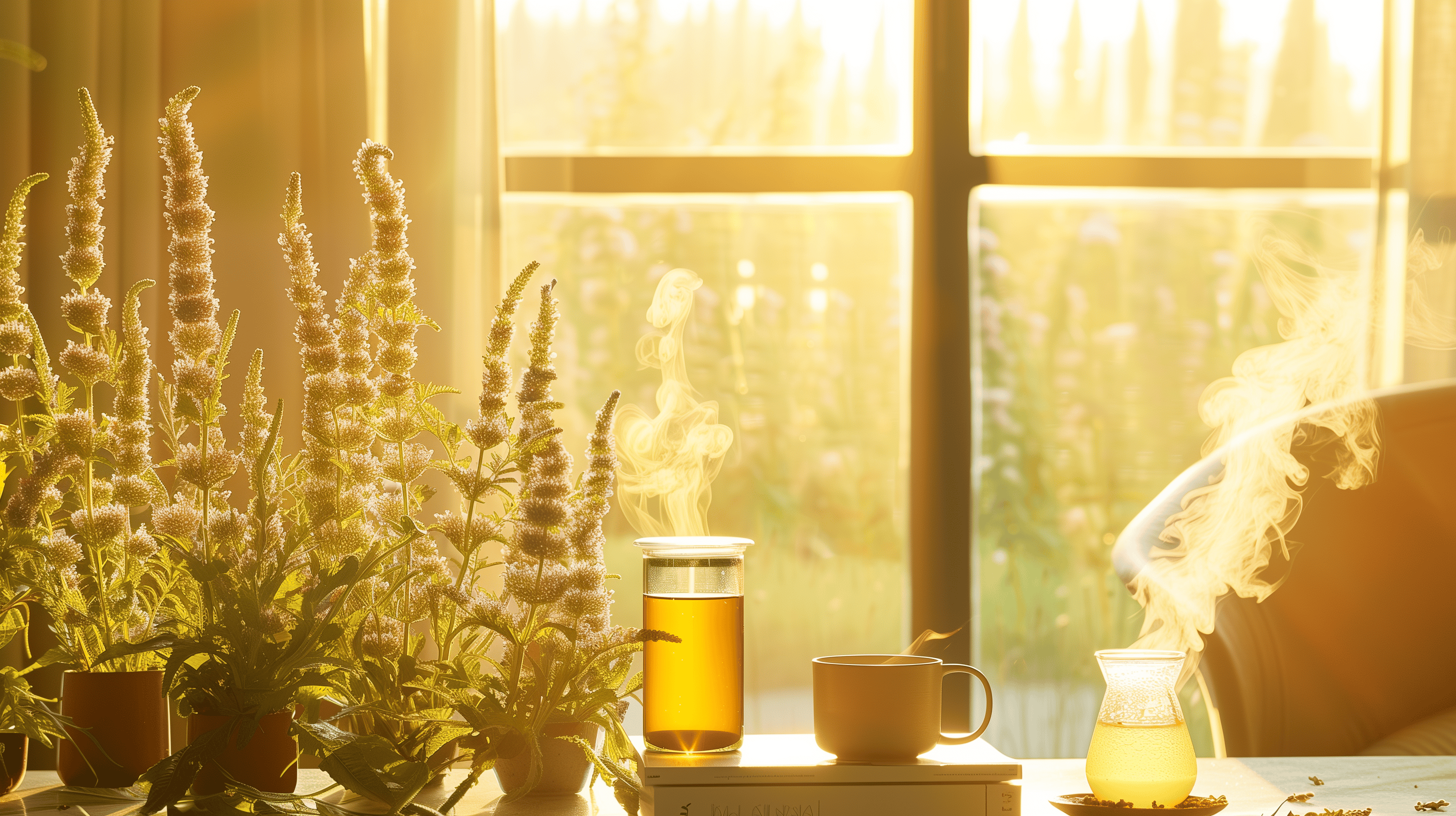Imagine a plant so powerful that it found space reserved in the healer’s toolkit forever.
Enter Mullein, nature’s answer to a swath of respiratory conditions that have plagued humanity for centuries. In fact, it is a powerhouse packed with history, versatility, and healing. Mullein thrives—one of the starting points of herbal medicine, taken care of by the keepers of the tradition and now even in the ground of modern health enthusiast gardens.
Its most recognized feature, the soft and woolly leaves are bearers of relief to irritated mucous membranes. And the mullein flower, of course, is a bright yellow beacon of its own, lighting up the country this one lights the way to natural healing. But this plant is not all about being beautiful and having bright flowers. The herb mullein has been a traditional go-to for helping control bronchitis, soothe that endless march of allergies, and quieten those annoying coughs that keep you tossing and turning all night.
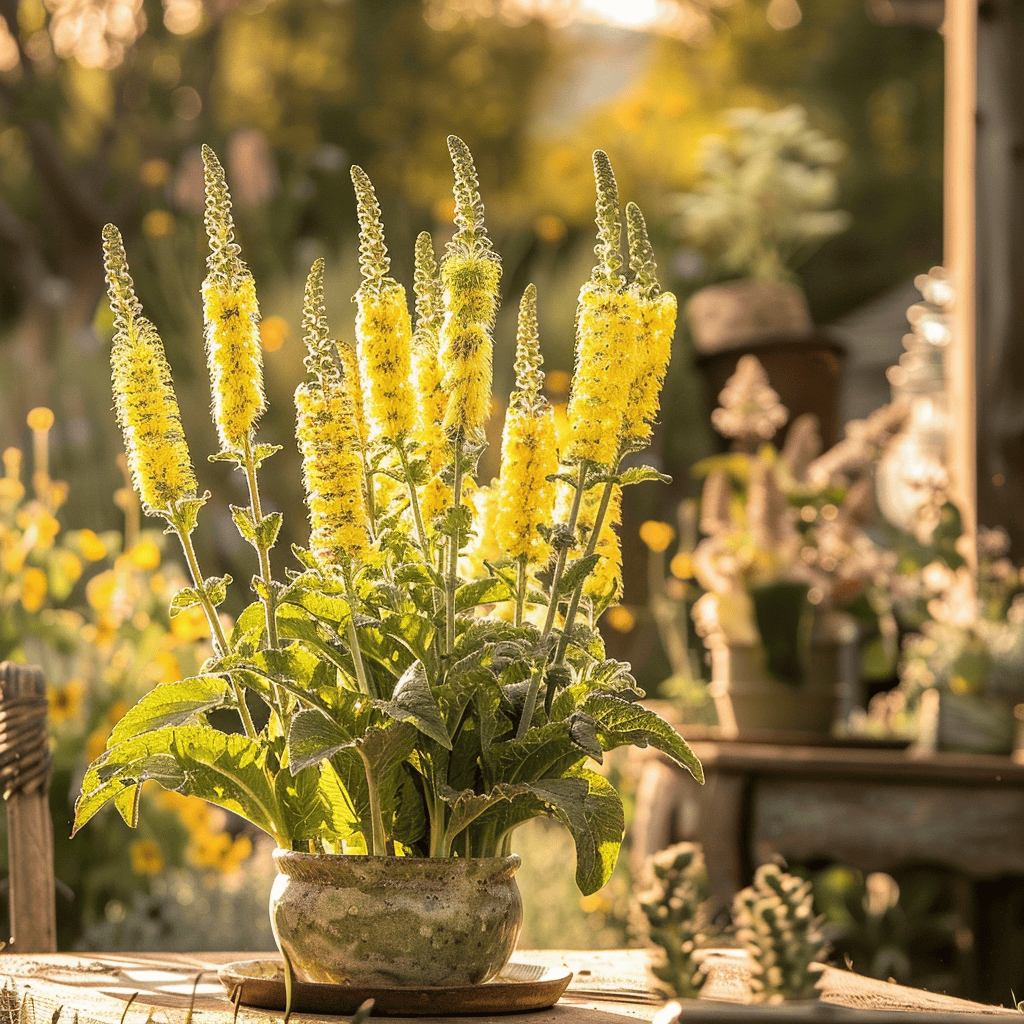
Why is Mullein such a magical remedy? Historically, Mullein was more than just a plant; it presented the delicate dance of cooperation between humans and nature, where every such plant growing wild by the wayside represented a potential ally in the struggle against diseases.
Today, this dance continues with the rediscovery of the Mullein herb plant and exploration into how best to use it for the lungs: teas with mullein or just inhale its calming essence.
From the “common” roadsides to the rarefied shelves of health stores, Mullein stands as a testament to the enduring power of natural wellness.
Understanding Mullein: Plant Profile and Varieties
We turn our gaze to the detailed tapestry of the Mullein plant. Fully understanding how to draw out all the medicinal power requires first getting a grip on the fine print of this botanical marvel.
Let’s paint the landscape of mullein—starting with the common mullein, also known as Verbascum thapsus. This is the showpiece of mullein diversity. Hard, strong, and far-reaching, it stands for a true survivalist amidst the plant kingdom. But of course, common never means drab. No sir, this herb is anything but. The world of natural remedies has made it a staple and is very renowned because of the velvety leaves and towering spikes of yellow flowers described in medical journals through the centuries.
Now, venture beyond the familiar and you’ll discover the wild mullein plant. These wild mulleins can be noticed due to small differences in color and shape which they possess. Truly, the wild is nature’s own, for it can prove diversity to the mullein family and show that this plant possesses much adaptive capability.
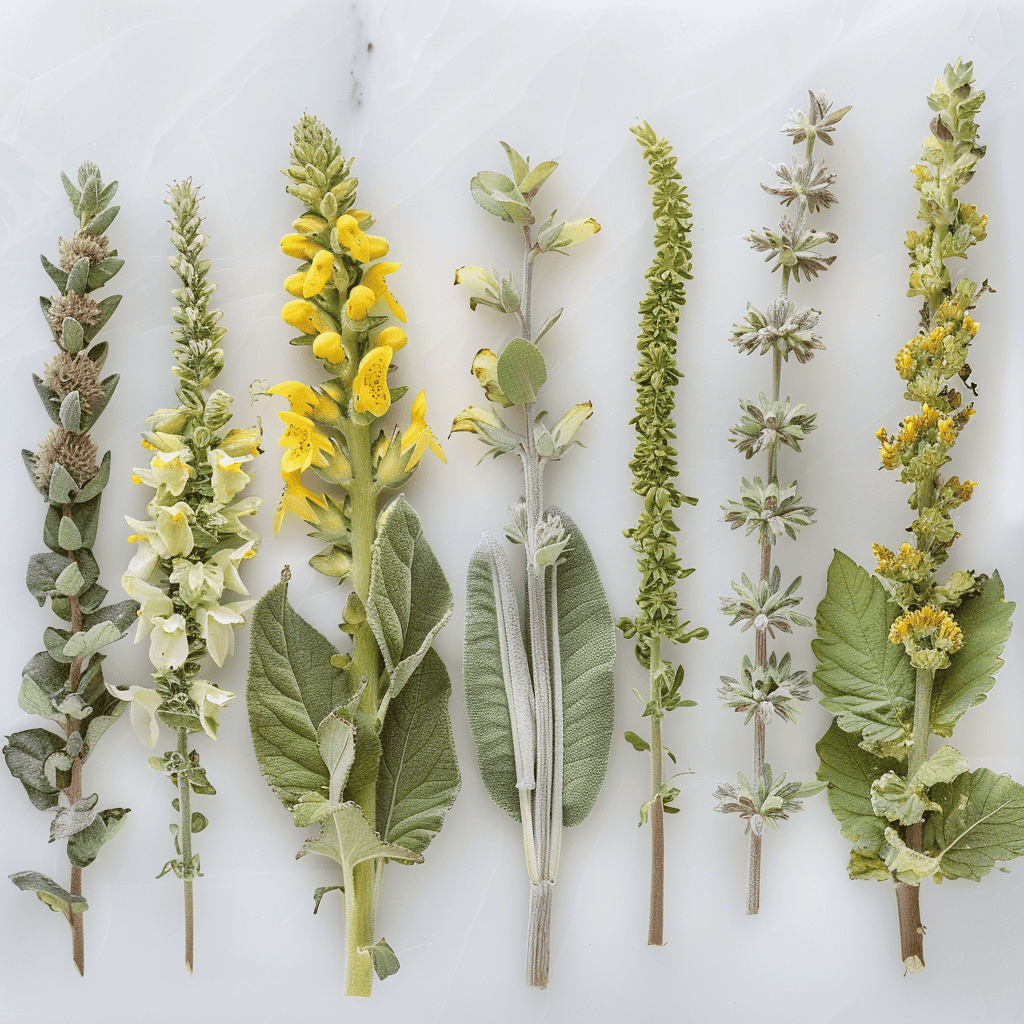
But what about the mullein flower?
It’s more than just a pretty face: the flower harbors most of the plant’s medicinal potency. Every flower, a burst of yellow, contains active compounds that have been put to use for health purposes.
This is the Mullein that has crept into the pages of herbalists’ books, one potent petal at a time.
The Mullein herb plant doesn’t just come in one shape or color.
Different kinds of Mullein exist, and this may be the reason for some types not being fit for use in teas or tinctures, or even when taken topically. Some of them will be milder and better suited for using Mullein for the lungs, and some of them may be even more preferred because of their very strong anti-inflammatory properties. Understanding such varieties is not only academic but it is practical.
An identification of the mullein type allows us to better understand this plant. Whether it derives from a wild plant of Mullein or a cultivated common Mullein—it may make a difference between good or great outcomes.
Mullein’s Medicinal Magic: Benefits for Bronchitis and Allergies
Now, we are brought into the very thick of the mullein’s healing territory, where its powers are turned against the fiery symptoms of bronchitis and the relentless siege laid by allergies. Mullein is not only a sedative to bring comfort but appears to speak back to the very tissues it is healing, much like a botanical whisperer in the realm of respiratory remedies.
If the system lining in your bronchial tubes is the highway, then bronchitis is the traffic jam, causing swelling and coughing.
Mullein acts as the master traffic controller, untangling the backup and soothing the agitation. This is no old wives’ tale but the fact of millions who have found relief in the arms of Mullein’s magic. It is from the smooth leaves and vibrant flowers that these compounds are believed to be formed. They provide a natural, supportive therapy for bronchitis sufferers by reducing inflammation and expelling mucus. The difference is that allergies are a bit like unwanted guests at your immune system’s party, and Mullein is the bouncer to help show them the door. Very often, people who drink the infusion from mullein’s leaves or inhale the smoke coming from the plant name the feelings they get “heady” and “clear-headed,” giving them a break from the “tyranny” of itchy eyes and runny noses.
Migratory mullein seems to dampen this allergic response, allowing an otherwise peaceful cohabitation with the environment around us.
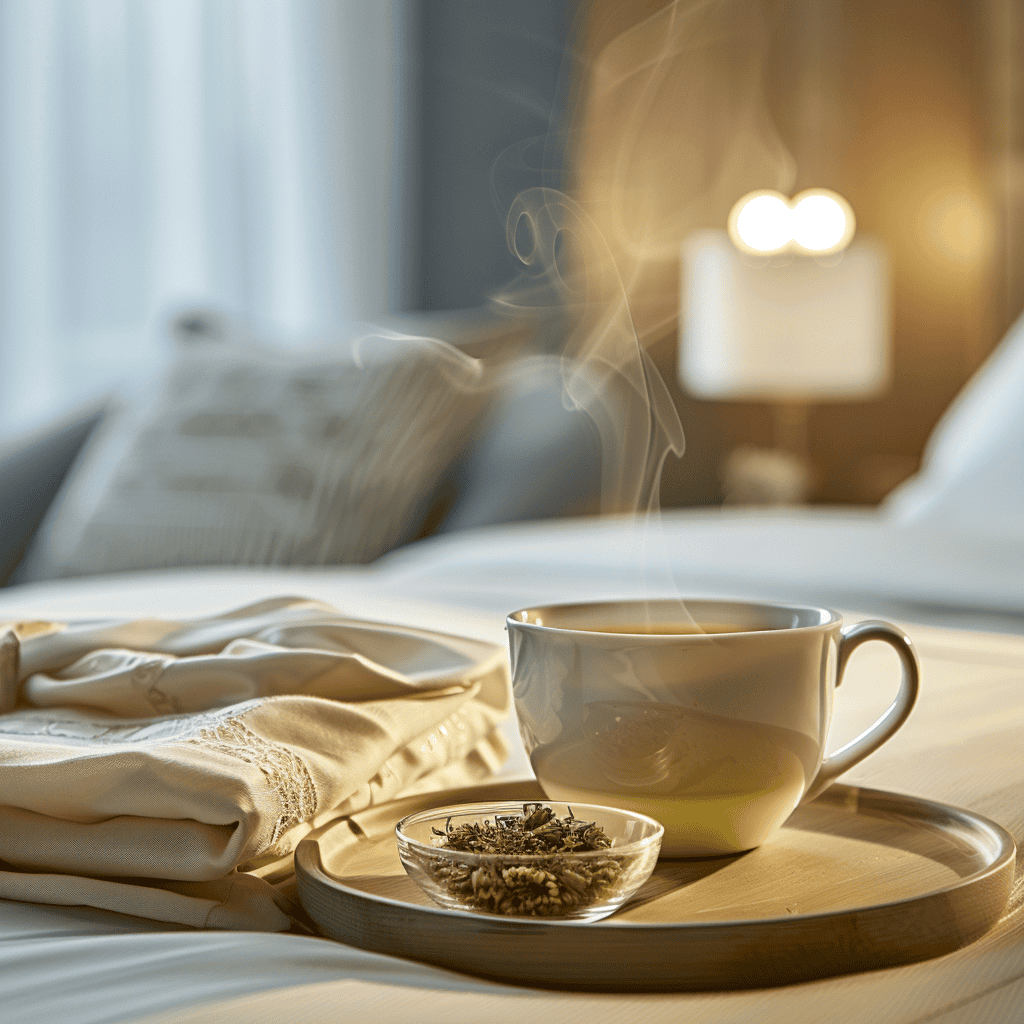
But what’s the secret? How does Mullein manage these feats?
In case anecdotes were not enough, even scientific curiosity is starting to come out and peek into the potential mechanisms behind the Mullein plant’s medicinal benefits. Saponins, mucilage, and flavonoids within the plant appear to be in cahoots together for this pursuit of health, delivering all of the reputed therapeutic effects.
The research is moving forward, and with each study, we are getting one step closer to finding how the Mullein might work its medicinal magic on the tissues it touches. Here, Mullein is more than an herb—it might just present ways that are gentler and kinder for the system in dealing with conditions modern medicine would treat much more aggressively. Mullein emerges as a plant in the full potential of its benefits and is indeed a symbol of hope for persons requiring alternatives to synthetic drugs in the treatment of bronchitis and allergies. It reminds us that nature still has its powerful pharmacy and that the search for unending health is still possible, the same being friendly and in harmony with our bodies.
Brewing Wellness: How to Make Teas with Mullein
First, step right into the kitchen—the modern-day alchemy lab, where the humble Mullein leaf is transformed into a potion of wellness—one cup at a time.
Brewing mullein tea—it’s truly an art; a daily ritual that invites healing with every sip. This is not a chapter about brewing tea; it is an art of crafting a personal wellness experience starting from a kettle and a handful of dried Mullein herbs. Make sure to use the very best quality dried Mullein that you can find. The strength is only as good as the herb you start with, and quality counts. Choose the source of organically grown mullein and make sure that it is well-dried and stored to keep its properties intact.
It is simple
Boil fresh water. The purity of the water is as important as the herb itself. Measure out about one teaspoon of dried mullein leaves or flowers for each cup, and put it into a tea ball or strainer.
Tip: Brew Mullein with just-boiled water for a minimum of 5 minutes, allowing the infusion of all compounds of healing. Cover the liquid. What I really like about the cover is that it makes sure none of those great essential oils, the medicinal properties, go floating off into the air, where they don’t do you a bit of good—they all end up right where they’re supposed to: in your cup and then into your body. While waiting for the mullein tea to steep, imagine the steam carrying away worries and discomfort. When time calls, remove the Mullein, and there you have it. Enjoy.
Some prefer their Mullein tea plain, some add a little honey, and others a slice of lemon to enjoy the earthy taste it gives.

Raw honey will add its own healing properties and nice light sweetness to your mullein tea, turning it into a more palatable type of elixir. Don’t drink Mullein to simply cure what ails you at the time, include it in your lifestyle as a preventative measure. The drink allows clear lungs and soothes the throat but at the same time is a moment of pause in the day for reflection and nourishing the body.
This chapter guides you through the simplicity and the complexity of brewing mullein tea. It gives practical advice, such as what parts of the plant to use and how to store your herbs, but it will also remind you to listen to the bubbling of the water, to the whispers of the steam, and the response of your own body to this age-old remedy. When you finish the last drop at the bottom of your cup, you’ve actually just learned not only how to make a simple drink, but you’ve participated in something that is brought down through the ages of herbal medicine as part of holistic practice. Mullein tea is more than a drink—it’s a tradition, a healer, and a comforting friend, all brewed into one.
Growing Your Mullein: Tips for Cultivation and Harvest
Welcome to a green-thumbed journey of Mullein cultivation that rewards bounteously not only in crop outcome. This chapter is for the cultivator, the earth-tender, one who seeks to bring the power of mullein from the soil to the cup—through a single plant at a time.
First, we will discuss setting up your mullein garden. Mullein will grow in full sun and well-draining soil, just as it does in the natural habitat it occupies. Whether you’re dealing with an open garden bed or compact real estate of containers, it matters very little to Mullein. This is one plant that isn’t fussy at all; simply give it a little room to stretch its roots and a modicum of care from yourself.
When planting Mullein, you have a choice: start with seeds or seedlings. If it starts from the seeds, a good cold stratification period for the seeds to be able to enhance germination recommended. If beginning with seeds, give them a cold stratification period in the fridge for about 10-12 weeks. Sprinkle onto the soil surface once ready. With the light needed by Mullein seeds to germinate, they should not be buried. Gently press them into the earth and water with a soft mist to settle them in.
Now, be patient. Mullein seeds take their time, and germination can be a slow process.
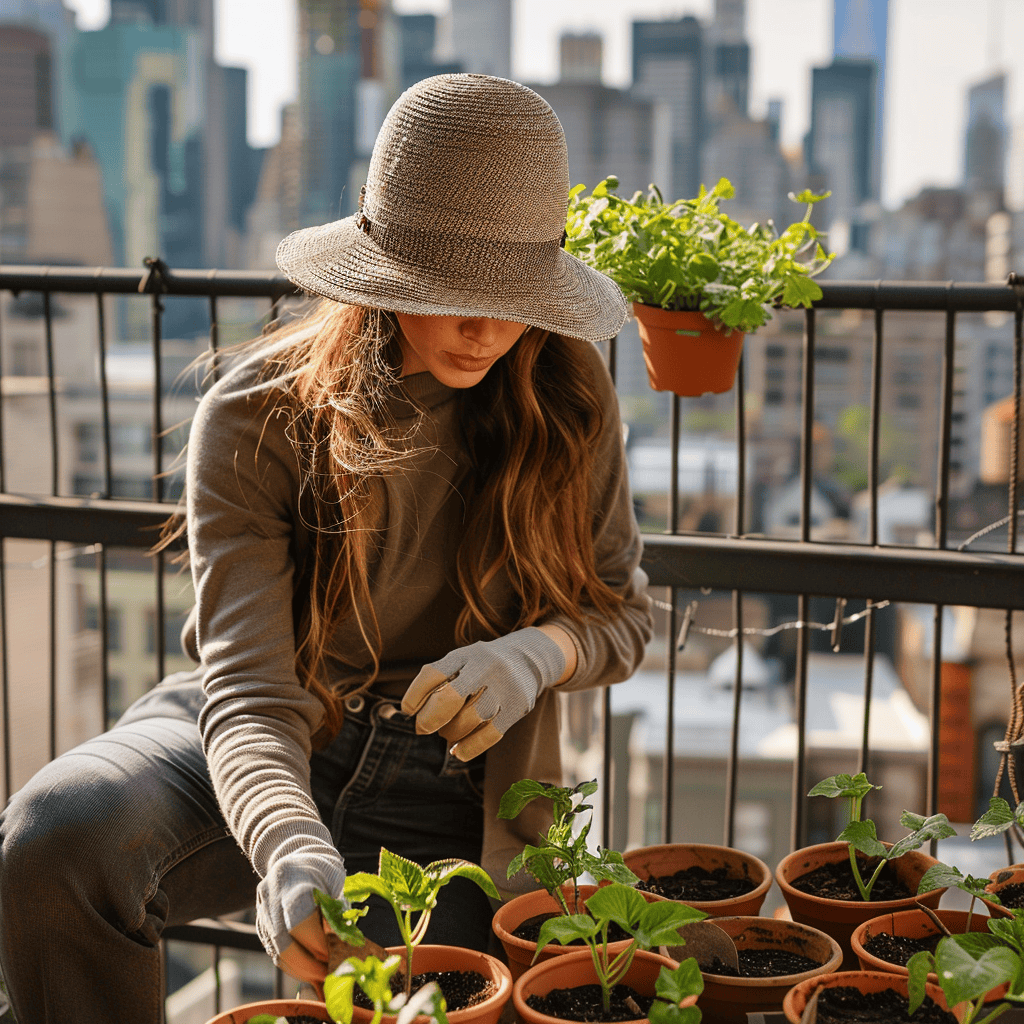
Soil should be kept moist but not sodden, and before long, signs of life should appear. As they grow, the seedlings can be thinned to the most viable ones to grow on, as Mullein likes space and doesn’t like to be crowded. It will be a relatively easier approach if started from seedlings or small plants. One can be planting Mulleins in the garden, considering that a mature plant can grow to quite an impressive size. Leave at least a foot or more between plants to allow fullness.
You will find your Mullein to stand, indeed, a very hardy character, asking little yet yielding much. Water only during extended dry spells, otherwise, let it be. It’s an accommodating plant when it comes to being ignored. Fertilizer? Forget it.
Mullein is perfectly willing to live in soils harsh and low fertility, as it allows it to put all its efforts into making those useful leaves and flowers, rather than lush but less powerful foliage.
Harvesting is an exercise in timing and respect. Collect the leaves when they are at their prime just before the plant flowers for the most potent medicinal qualities. Cut the leaves at their base and gently pull the flowering heads off their stems as they open. Then drying becomes the most crucial factor. Spread your mullein treasures in a warm and dark place where air circulation is good. When dry, store the leaves and flowers in airtight containers away from light and moisture. Enjoy mullein tea, tinctures, and more all year long. Growing mullein from seed to harvest, you have nurtured a plant but also the opportunity for health self-reliance and a deep relationship with the world around you. The process is highly rewarding and culminates with the satisfaction of having your very own mullein, which is truthfully part of the cycle of growth and healing.
Mullein for Lung Health: A Natural Approach to Respiratory Support
Free yourself from the chains of respiratory distress with Mullein, your natural ally in the battle for free, clear lungs and unobstructed breathing. It is not a question of band-aids or hiding symptoms; rather, it is a question of tapping into the powerhouses of lung health of Mullein’s relationship to the lungs—crafting a game plan for breathing easily and living fully.
Think of your lungs as sponges—dynamic, life-giving, and, unfortunately, prone to getting gunked up. Enter Mullein, the botanical dynamo that’s even scientifically proven to take the edge off your respiratory problems. The herb breaks down and expells all the muck adhering to airways in cases of nasal congestion or phlegm-thick predicaments.
But how does one deploy this herbal heavyweight? It’s all about strategic use for full impact. Where other herbs fear to tread, Mullein steps up for those suffering from sinus, ready to soothe it down.

A Mullein steam inhalation could be your answer. Regular inhale-exhale with this simple herb could unclog sinuses and open them up.
The magic is not in the application but rather in the consistency itself. Make mullein a staple, regular in your wellness routine—not a guest star. Weave it into your daily with teas or extracts. Let it be building your respiratory resilience like a steady drumbeat.
And, do not forget the form of dried leaves and flowers, oils, and tinctures—Mullein does it all.
However, make sure your Mullein source is the best one, without contamination and rich with lots of good stuff—because that is what your lungs want. It is about setting up systems, and routines that make the use of Mullein regularly, like your toothbrush. This is not a one-off; it is a lifestyle change, a commitment to taking the reins of respiratory health. So, plant the seeds (literally and metaphorically), brew the teas, and inhale the steam. Experience Mullein with the energized vigor it has coming, and see where it can take your inside lung health.
Mullein is your herbal agent, ready to go to work for you.
Conclusion: Mullein’s Place in Modern Herbal Medicine
As we draw the curtains on our Mullein journey, it’s clear that this is not just another herb in the garden. Mullein plays its part in modern herbal medicine, which cannot be disregarded, standing as one of the shining beacons for its resilience and healing as much as its towering stalks.
Mullein has carved out a formidable niche as a champion of respiratory health.
In short, it testifies to the wisdom of the ancients and is a plant that has walked the path from traditional hearths to frontline alternative health. Not an archaic plant, Mullein is avant-garde in the modern wellness story. It has adapted, proven to work through research, and has earned its stripes between herbalists and those looking to do nothing more than breathe easier.
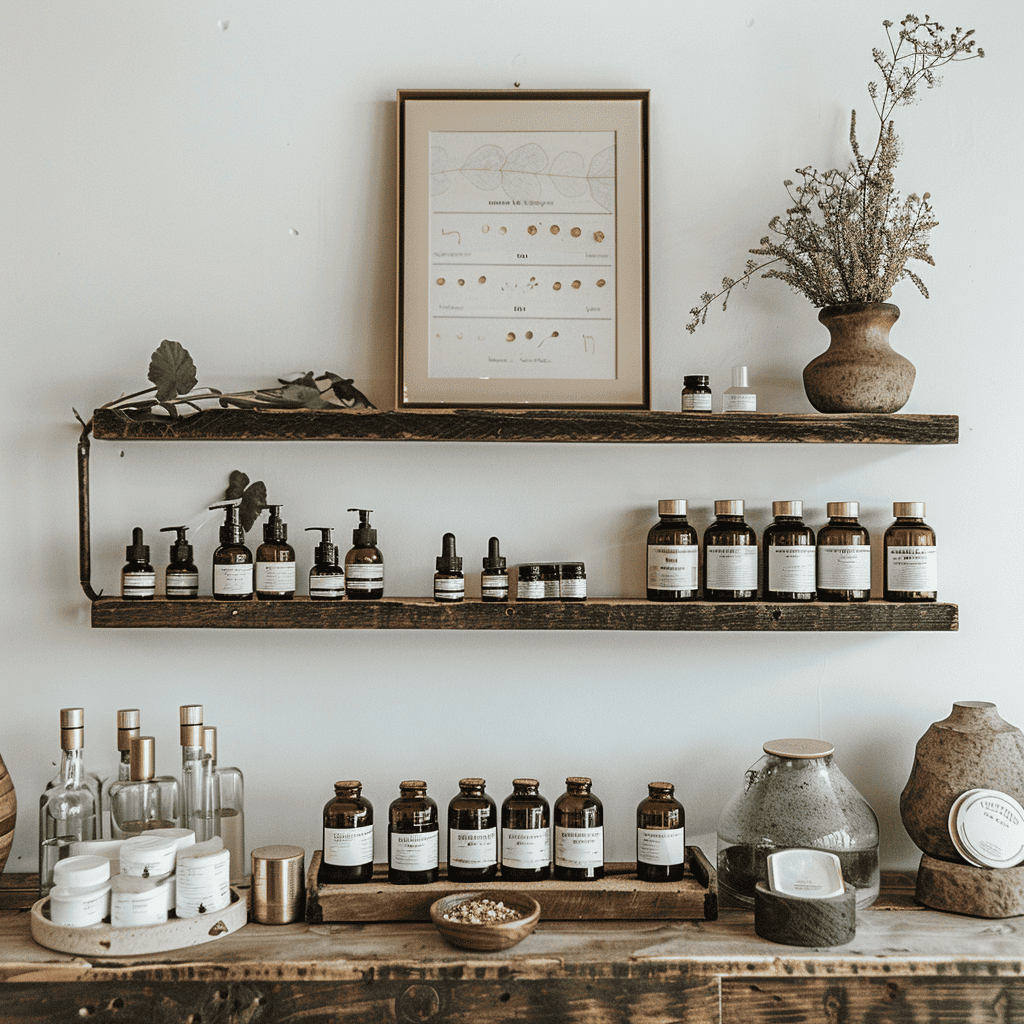
But mullein is no ordinary means to fix coughs and congestion. In a world that every day becomes more skeptical of man-made solutions, Mullein presents itself as a torch with the power and simplicity nature handed us. In short, think of Mullein not only as a plant but rather as a philosophy. Let it be the approach to the world in which the balance and healing come from the earth and not the laboratory. The popularity of Mullein continues to grow, reading somewhat like a story of reconnection with nature, of finding balance in the give and take of health and disease.
This plant’s journey is far from over. This is the story of Mullein: our very own saga, common to health and harmony. Another cup brewed; breathe through the world of Mullein tea. Enjoy the freedom to breathe..
